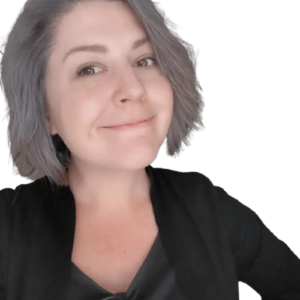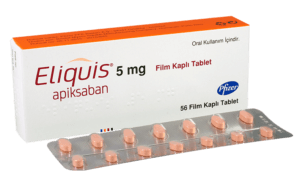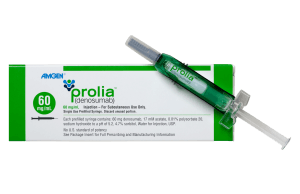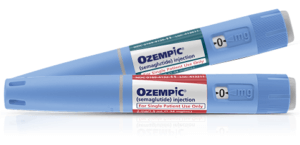
The concept of Blue Monday began in 2004 with psychologist Dr. Cliff Arnall. He developed a formula to figure out the “saddest day of the year” as part of a holiday campaign for a company called Sky Travel, launching the first official Blue Monday on January 24th, 2005. Since then, it has basically become a marketing tool to get people to “shop away the Monday blues.”
With the winter months sometimes feeling a bit uninspiring, do we really need to have a day where we are supposed to feel sadder than others? And will buying a vacation really cure true depression? I, for one, do not think so. So, let’s take a look at the science behind Blue Monday and how we can manage mental health in a more meaningful way.
What is the Blue Monday formula?
The formula for Blue Monday is:
(W + (D – d)) x TQ
M x NA
Make sense? It certainly didn’t to me, but here is what it supposedly means:
-
- W is for weather (like how gloomy it is outside).
- D stands for debt (money owed), and d is monthly salary.
- T is the time that’s passed since Christmas.
- Q is the time since one may have given up on their New Year’s resolution.
- M represents low motivation, and NA is the feeling of needing to do something to fix things.
The idea is that bad weather, leftover holiday debt, waiting for payday, the excitement of Christmas fading, and broken resolutions all add up to make people feel extra gloomy on this particular day. It’s not scientific, but to give some credit, it may be a way to describe why January can be a tough month for many.
Is Blue Monday really the saddest day of the year?
Short answer: no. It started as a marketing idea and isn’t based on real science. For example, how can one measure everyone’s motivation or financial status? What about our friends in the Southern Hemisphere or other, sunnier parts of the world that do not have gloomy weather? There are too many variables to be based on any facts.
So why does it keep coming up as a successful marketing campaign year after year? Perhaps it resonates with how many of us generally feel at this time of year with a case of the winter blues. The simple fact is that Blue Monday was invented to sell vacations. Over the years, it’s simply become a yearly campaign, often used to sell products claiming to boost well-being—usually without any real foundation and not backed by any research.
Everyone has good and bad days when it comes to mental health, and these are different for each person. Trying to figure out the “most depressing day of the year” doesn’t work when everyone’s life and experiences are unique. It’s also important to know the difference between feeling a little sad and struggling with a mental health issue like depression. Feeling sad for some specific reason happens to everyone sometimes, but depression can seriously affect daily life.
What is the difference between Blue Monday and Seasonal Affective Disorder?
While Blue Monday is not an actual mental health condition, some people do experience Seasonal Affective Disorder (SAD), which is very real, bringing symptoms similar to depression during the colder months, such as persistent low mood, fatigue, and diminished interest in activities once enjoyed. However, this disorder and other disorders related to low mood are not restricted to just one day.
Ways to Boost Mental Health
We should take proactive steps to promote mental health every day, not just on Blue Monday. Treating issues like depression and anxiety as opportunities to generate sales is not a sign of genuine interest in the buyer’s well-being. Instead, the approach needs to focus on real solutions. This means using proven methods that concentrate on managing mental health issues.
Here are some simple and practical steps anyone can take to look after their mental health:
-
- Talk about how you feel with someone that you trust.
- Stay active, eat healthy, drink responsibly, and reach out for support if you are having a hard time—there are people who want to help.
- Speak to a licensed therapist or medical professional for an accurate diagnosis of any mental health conditions and follow a recommended treatment plan.
How to Make Blue Monday Less Blue
Whether or not someone believes in Blue Monday, January itself is a good time to take stock of plans and goals for the rest of the year. Instead of allowing a marketing ploy to get the better of us on the third Monday of the month, let’s try a more focused approach. This Blue Monday, try:
Reflecting on Resolutions
It’s quite normal for sticking to New Year’s resolutions to slip. If they didn’t stick, now is a good time to ask why and what could have been done differently. Instead of asking, “Why did I fail?” isn’t it better to say, “How can I do better?” and start again, setting new goals that are more likely to be met, thanks to the lessons learned?
Take a moment to think about how the resolutions were approached. Were they hard to reach right from the start? If so, dial it back a bit. Even slow progress is still progress, and slower progress is often more sustainable.
For example, going from a sedentary lifestyle to trying to become a marathon runner overnight is certain to be too much for anybody. Setting impossible goals often results in giving up after just a few days, which can leave people feeling frustrated and disappointed. Instead, make a start small. Get into the habit of walking first. Then try jogging, and slowly build up over time.
Instead of making big New Year’s resolutions, try setting smaller, more realistic ones. For example, aim to exercise for 30 minutes three times a week. If running a marathon feels too hard, start with a goal to run a certain number of miles by a specific date.
Get Physical Exercise
Try going to the gym or doing some kind of exercise. It helps the body release endorphins, which can improve mood and help combat the winter blues. Even just 20-30 minutes of activity can make a big difference.
Watch an Inspiring Movie or Read a Good Book
Burying yourself in a great piece of literature or watching an uplifting comedy or comfort movie is a simple way to boost your mood. I love any comedy that makes me laugh, and I won’t say no to a cheesy but cute romance story. Not into movies? Dive into a good book for a while, or pop on some upbeat music and get moving. Inviting friends or family over for some company could add to the good vibes, as spending time with loved ones often does.
Practice Self Care
If spending the day alone, take some time for self-care. Light a candle, cook or order delicious food, call a loved one, or relax in a warm bath. Use this time to rest and reset for the rest of the year!
Use Blue Monday to rewrite your goals
A formula can’t decide how someone feels on the third Monday of the year, but mindset certainly can. Use Blue Monday to reset your goals, set smaller steps to reach them, take some time for self-care, or hang out with friends or family. Or, if that low mood has been persistent, visit a healthcare provider to check in and talk about any mental health challenges. Support is always there. We just have to reach out for it.
FAQs
Is Seasonal Affective Disorder experienced only in winter?
SAD symptoms often appear in late fall or early winter and fade during spring and summer, a condition referred to as winter-pattern SAD or winter depression. Alternatively, some individuals experience symptoms in the warmer months of spring and summer, known as summer-pattern SAD or summer depression.
What percent of Americans suffer from SAD?
Studies show that approximately 5% of adults in the United States are affected by SAD, which usually persists for around 40% of the year. Factors like geographic location, age, and gender influence its prevalence.
Can you recover from SAD?
There are several ways to treat seasonal affective disorder (SAD), such as light therapy, antidepressant medication, and cognitive behavioral therapy (CBT). A health practitioner will determine the best treatment for you depending on symptoms and their severity.
















